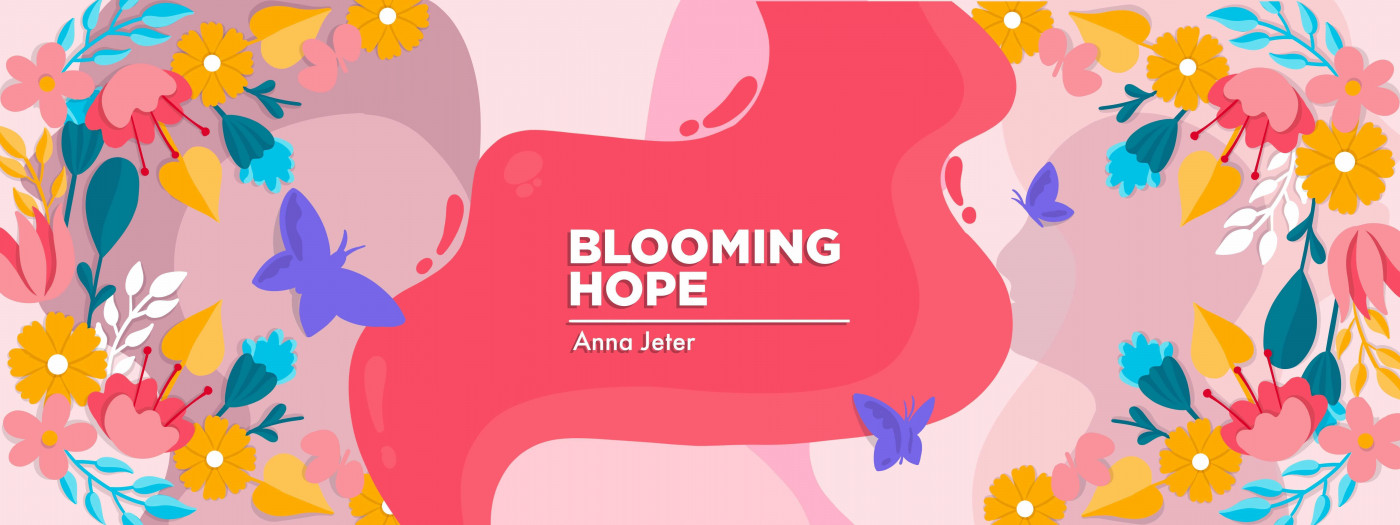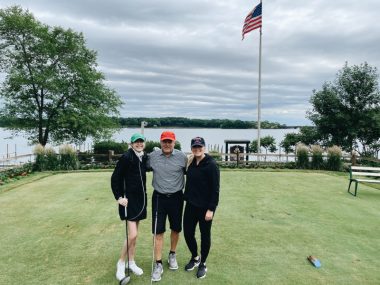New Accommodations, Same Destination

The need for adaptation in my life began so quietly I often didn’t notice the accommodations I required.
I started dancing at a young age, and at the end of each dance season, we had a big recital with different costumes for each performance. This created a problem when considering my clunky Flolan pump, which I usually carried in a floral or Hello Kitty backpack on my little shoulders.
Hoping I would feel equal to the other girls on stage, my mom would order a second costume for each performance I was in, which she would use to sew a matching backpack to hold my infusion pump. I cannot tell you how many “mom points” she earned by doing this for years.
The bigger adjustments came later in life. In high school, I began needing oxygen to sleep and to travel on airplanes. I remember the deep, visceral feeling of hate I harbored for this specific medical accessory. I can recall sitting on a flight with classmates for a field trip with the brim of my baseball cap pulled down as low as possible, hoping no one could see the tube in my nose.
By the time I was looking at colleges, accessibility was a much bigger conversation. To discuss options, we met with representatives of my top two choices, one after the other. The first college’s counselor couldn’t tell us very much about handicap-accessible parking spots or where elevators were located on campus.
The second college was quite different, and counselors said they’d be willing to install a handicap spot in front of the dorm for my personal use. They explained how other disabled people used the handicap elevator in the dorm. My choice was easy.
Things at this university weren’t perfect, but I had a wonderful four years there, and I was able to navigate the entire campus, which is very difficult while in heart failure and living with oxygen saturations at about 82%.
Three years have passed since my heart and lung transplant, and I now find myself in a place where I view these types of accommodations as a strength. I recently invested in an electric bike, and while I know it will take a while to get the hang of it, it will bring me so much joy. I haven’t been able to ride a bike in years.
I also went golfing on Father’s Day for the first time since my transplant. I rode in a cart with my sister, and family members teed up the ball for me to save me some energy. I wore my oxygen tank in a backpack and skipped a few shots here and there.
I was still able to play. In fact, I had one of the best putts of my life. On the first hole, I skipped shots, nervous to even swing the club again. But by the end, I couldn’t wait for another chance to get back on the course.

From left, Anna, her father, and her sister golf on Father’s Day. (Courtesy of Anna Jeter)
As we were exiting the ninth hole, I spotted a player who had a lower-leg amputation and was using a prosthetic leg. I know nothing about this woman or how it feels for her to be playing a sport with a visible physical difference. And I know nothing about her thoughts about disability and accessibility. But I do feel less alone knowing that she’s out on the course, too.
I used to hate the word “disabled.” I hated the handicap sign that sat in my driver’s side pocket of the car. I hated having to drive places instead of walking with friends. I hated anything that set me apart from the standard.
Perhaps it’s age or wisdom, but I feel so different now. I claim the label “disabled” vocally and frequently. I don’t want people to be afraid of the word or of associating it with me.
A fellow illness warrior posted on Instagram the other day that she’s trying out seated tennis, and all I could think was, “That’s so rad!” It all has my mind reeling. I want to get inventive about how I can get myself into the spaces I enjoy and the ones I’ve been too intimidated to approach previously.
I want more days like when a woman with a tracheostomy and a woman with a prosthetic leg are on the golf course along with others. I want to close the gap of “normal,” whatever that means. I want to be fully in this world with my disabled body.
I want to never forget that aids, adjustments, and oxygen are simply forms of assistance that help get me where I’m going, and they don’t matter one bit as long as I end up where I was headed in the first place.
***
Note: Pulmonary Hypertension News is strictly a news and information website about the disease. It does not provide medical advice, diagnosis, or treatment. This content is not intended to be a substitute for professional medical advice, diagnosis, or treatment. Always seek the advice of your physician or other qualified health provider with any questions you may have regarding a medical condition. Never disregard professional medical advice or delay in seeking it because of something you have read on this website. The opinions expressed in this column are not those of Pulmonary Hypertension News or its parent company, Bionews, and are intended to spark discussion about issues pertaining to pulmonary hypertension.








Leave a comment
Fill in the required fields to post. Your email address will not be published.